A guitar shredder fortunately isn’t only as good as the guitar they choose to shred on, but finding a good one with all the necessary bells and whistles definitely doesn’t hurt. As a matter of fact, a well-made guitar can have a significant impact on a player’s abilities.
From the headstock to the bridge there are many things to consider when finding the perfect guitar for shredding, but a good pick and proper technique will also go a long way. We’ll talk about the less important factors later, but what are the big ones that make a guitar good for shredding?
Features that make a guitar good for shredding include low action, a slim, C-shaped neck, active humbucker pickups, and lightweight and cut-out shapes. Having 24 frets, a tremolo system, lighter strings, or even scalloped frets are other things that can improve the playability of a guitar.
These features are common amongst shredders, but they’re desirable features for many other players too. It’s honestly up to the player to make the best decision on what feels right for them and what guitar feels right. The tone is in the hands of the player for the most part, but as I said earlier, how easy it is to play the guitar can make a big difference.
Everything That Makes A Good Shred Guitar
1) Jumbo Frets
![Jumbo Frets - What Makes A Guitar Good for Shredding [Shred Explained]](https://travelingguitarist.com/wp-content/uploads/2021/12/Jumbo-Frets-What-Makes-A-Guitar-Good-for-Shredding-Shred-Explained.jpg)
Jumbo frets are larger in radius so they sit higher off the neck, making the instrument easier to fret. In any fixed component, that usually means greater vibrational coupling between the strings and neck.
It’s not uncommon for players to have a guitar made with jumbo frets for increased playability, but also for a fatter sound which they reportedly help create.
My ESP Eclipse II is a great example of a guitar with jumbo frets, and it makes quite a difference. I love my PRS SE Custom 24 and my Epiphone Les Paul Custom, but jumbo frets are definitely easier to play on.
2) Great Fret Work
![Suhr Guitar - What Makes A Guitar A Beginner Guitar [ANSWERED].jpg](https://travelingguitarist.com/wp-content/uploads/2021/12/Suhr-Guitar-What-Makes-A-Guitar-A-Beginner-Guitar-ANSWERED.jpg.jpg)
While jumbo frets are great at producing a better tone for shredding, a luthier’s fretwork is extremely important. If your frets are not all the same radius or height, you won’t be able to set the guitar up in any way you choose because you’ll be limited by the imperfections of the guitar’s design.
If your frets are too high and the setup is too low, you’ll get fret buzz. Frets wear out, so it’s safe to say that if you plan on playing a lot, you’ll need a good re-fretting one day, although, it’ll probably be a long time away. For example, I’ve had my Epiphone for almost 15 years and it’s still good to go.
3) Medium Low to Low Action
| Setup Parameter | Measurement | Factory Specification |
| Truss Rod Relief | 0.005″ (0.127mm) | 0.005″ – 0.010″ |
| String Height | 4/64″ (1.58mm) *Measured at the 17th fret from the bottom of each string. | 2/32″ at 12th fret (Treble Side) 2.5/32″ – 12th fret (Bass Side) |
| Pickup Height | 3/32″ for Neck Pickup and 1/16″ for Bridge Pickup – while holding down the very last fret on the guitar neck. *Measured at Both High and Low E-String Side of the Pickup | 3/32″ Bass Side (Both Pickups) 5/64″ Treble Side (Both Pickups) |
Action is the space allowed for the strings to vibrate above the fretboard. Most shredders want medium to low action because it requires less work for the player to move along the fretboard. You still may need some room to bend the strings or use the whammy bar, if you have one.
I’ve got a guide here on how to set up the action of a PRS but a lot of the rules explained in it apply to many other guitar types as well. On my PRS SE Custom 24, for instance, I’ll try and get neck almost as straight as possible.
A 0.005″ relief is ideal for me, and then I get the string height down to 4/64″ on both sides, although, it might be slightly higher on the low-E side.
4) High Output Pickups like EMGs or Bareknuckles
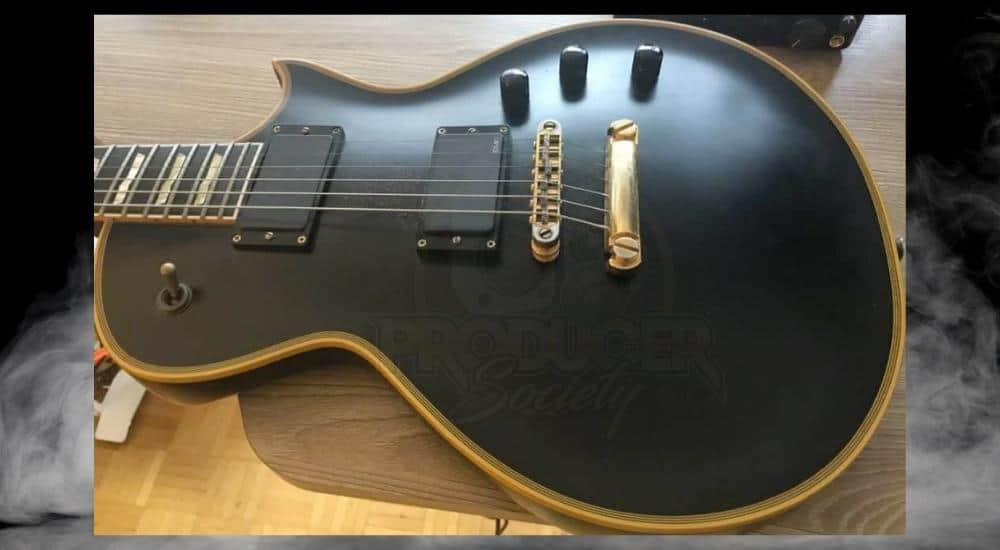
Pickups are extremely important to all guitarists, but they’re also important for shredders because they commonly need a lot of output for their high-gain tone. If you don’t have a pickup that can deliver the gain and sustain you need, then you’ll not have enough sound to actually shred.
Pickups are what make an electric guitar sound the way it does and allow for amplification. Double humbuckers are great for shredding because it allows for gain and high volume, while single-coil pickups create clear and bright notes.
For shredders, it may be wise to get a guitar that has both so you have plenty of gain but clear consistent sound for individual notes. Another thing you can do is just buy EMG pickups and then have someone install them in your guitar.
5) Floyd Rose Set Up
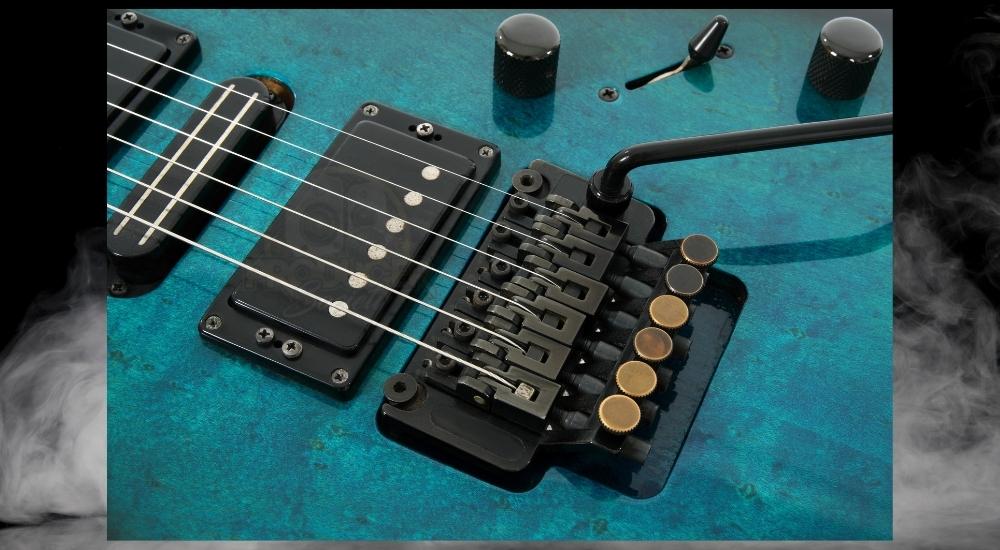
It’s not a necessity, but if you are into things like dive bombs, then a Floyd Rose may be a good choice. It locks your strings in place while you play however you want and keeps your guitar in tune the whole time. I’ve never owned a guitar with a Floyd Rose tremolo system, but it’s definitely on my list.
The only downside is it takes more maneuvering to change strings, so definitely have a backup for live gigs.
You can play leads and solos without a tremolo, but dive bombs and vibrato are way easier with one. Any iconic shredding solo you can think of is filled with vibrato and bending. It’s just what they tend to do because it sounds great with a lot of gain and distortion.
6) Light Weight
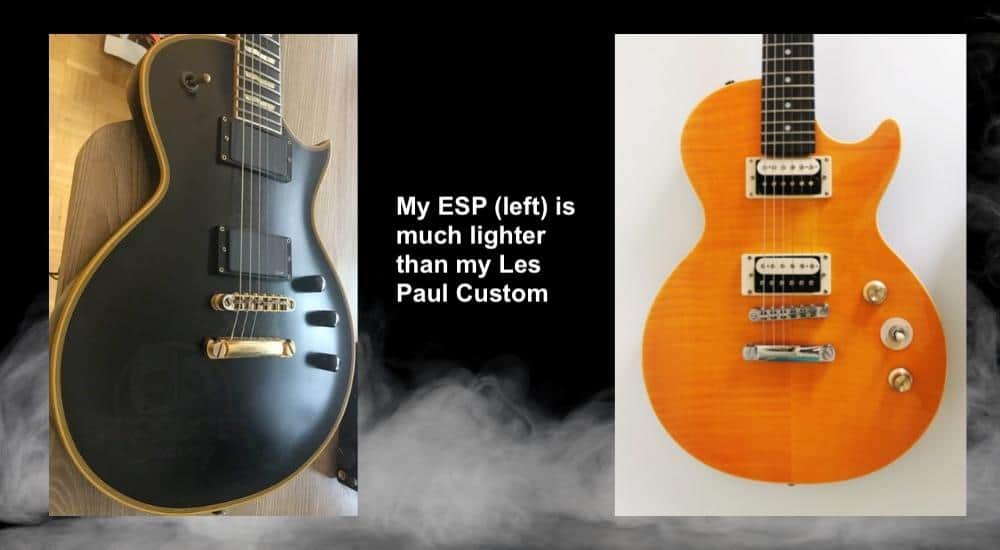
A lightweight guitar is very easy to shred on. Not saying that a 1972 Les Paul Gold Top isn’t a great guitar to shred on, but the lighter it is the easier it is to carry it around with you.
Think Dimebag or Eddie Van Halen. A V-neck and a razorback are relatively smaller and lighter than a strat or Gibson and Dime and EVH were big-time performers as much as they were shredders.
7) Double Cut-Away Shape For Easy Access to Higher Frets
![Guitar Shape - What Makes A Guitar Good for Shredding [Shred Explained]](https://travelingguitarist.com/wp-content/uploads/2021/12/Guitar-Shape-What-Makes-A-Guitar-Good-for-Shredding-Shred-Explained-1.jpg)
The guitar’s shape is very important when it comes to shredding. You wouldn’t see Dimebag or Steve Vai with anything that didn’t give them complete access to all their frets, would you? This is important because you want to be able to access every part of the guitar without difficulty.
Acoustic guitars are a great example of guitars that aren’t made for this style. It’s not uncommon for them to have non-cutaway bodies. As a result, getting to the higher frets on an acoustic full-bodied guitar is almost impossible without trying real hard.
8) Lighter Strings
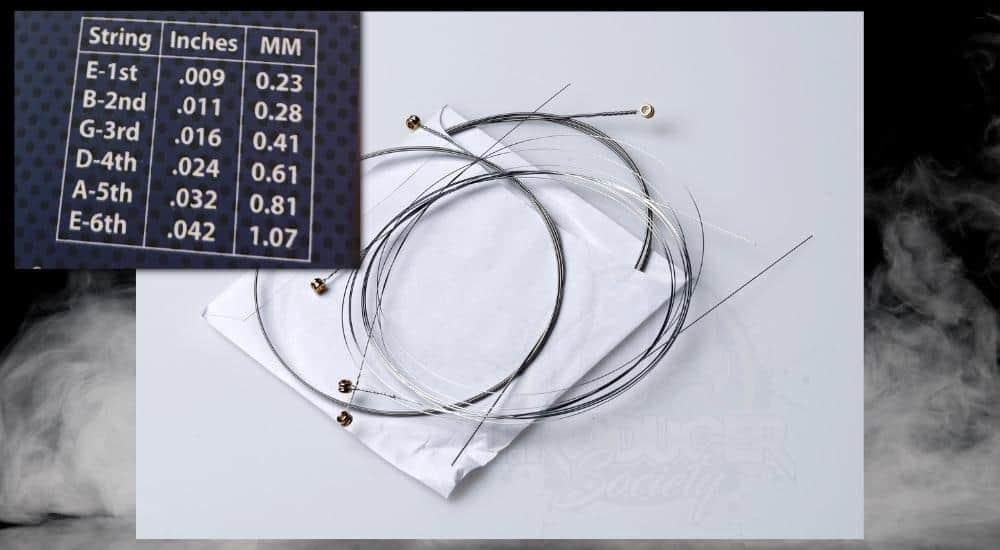
The lighter your strings are, the easier they are to play. Most shredders use strings that are 9s or 10s so they can bend easily and play faster. Bending, legato, tapping sweep picking, and generally playing fast is easier on lighter strings.
There was a time when I was using heavier gauge strings because I was told you could have a lower action if you used heavier strings, but it just wasn’t worth it now that I look back on it. Heavier gauge strings are just too hard to play, and while the action might be slightly lower, thicker strings are harder to fret.
9) Thin Body
![Thin vs Thick - What Makes A Guitar Good for Shredding [Shred Explained]](https://travelingguitarist.com/wp-content/uploads/2021/12/Thin-vs-Thick-What-Makes-A-Guitar-Good-for-Shredding-Shred-Explained.jpg)
When shredding, the last thing you want is a guitar that is hard to play because it’s too wide or too thick. The guitar, particularly the body, has to be on the thin side so that it sits close to your body and it is easy to nail those shredder licks.
Think about trying to shred on an acoustic, that’s pretty much the exact opposite of what you want for a shredding guitar.
That said, there are people who can shred on an acoustic. It’s just that it’s not ideal for that style. The same thing goes for the ES-335 body type which you can see in the image above.
10) Double Cutaway
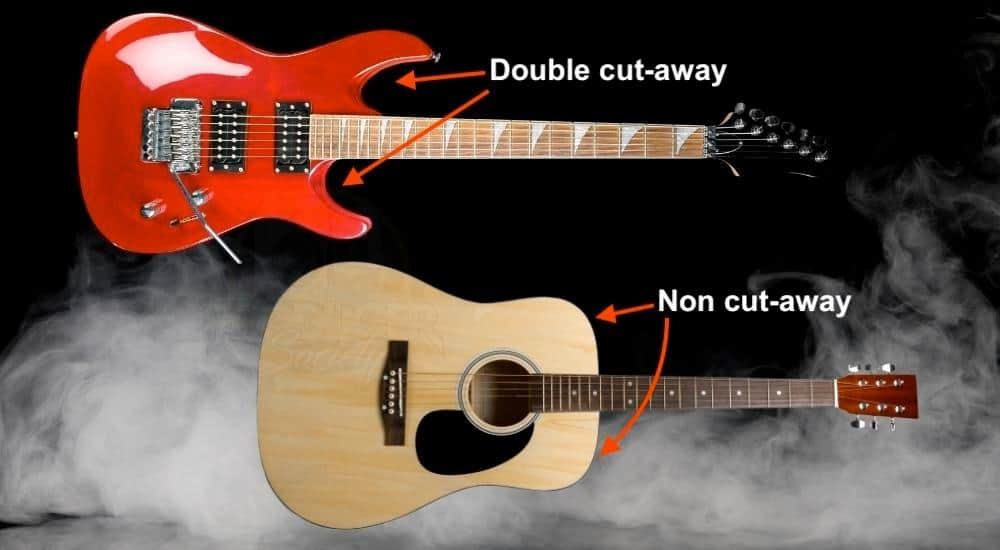
Like I said earlier, to shred on the guitar you’ll need room for your fingers to move around, especially on the higher frets. Cutaways, especially double cutaways will help with this big time. This is especially important if you’re going to have a guitar with more than 22 frets which brings me to my next point.
11) 24 Frets Or More
![22 Fret and 24-Fret - What Makes A Guitar Good for Shredding [Shred Explained]](https://travelingguitarist.com/wp-content/uploads/2021/12/22-Fret-and-24-Fret-What-Makes-A-Guitar-Good-for-Shredding-Shred-Explained.jpg)
A good shred guitar will commonly have 24 frets on it, although, it’s not actually the most important part of the instrument. I bought the PRS SE Custom 24 pictured above many years ago purely because I wanted a fixed bridge like what you can see on it and 24 frets.
It wound up being a great purchase because I use the PRS SE Custom 24 on a regular basis now. Is It the best shred guitar? No, it’s not, but with some high-output pickups, and some new volume knobs thrown on it, I think it could be greatly improved.
12) Flat “C” Shaped Necks
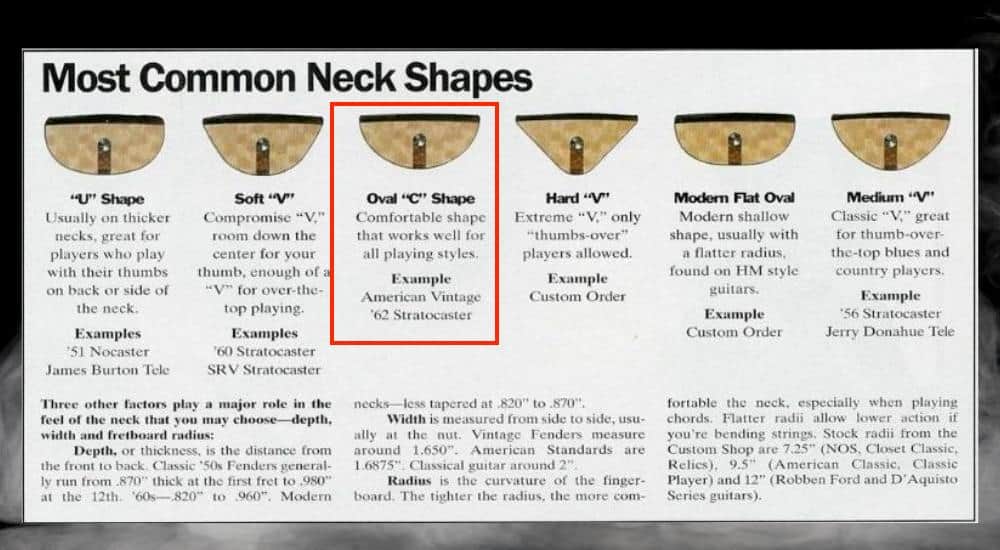
The neck has an important role for the guitar no matter the style, but the “C” shape is a popular choice for guitarists who want speed. There are many types of necks you’ll see but the “c” shape, “v” shape, and “u” shape are certainly the most popular.
Each has its place, but the flatter “C” shape is arguably the best for a shredding guitar because it’s easier to move around on. As I’ve said though, a lot of this is up to personal preference. I’m just describing some of the common tendencies out there.
Important Things to Note About Shred Guitars
1) The Amp (and the Gain) Makes a Big Difference
It’s easy to overlook the amplifier, but they’re incredibly important for your tone. You can add all kinds of pedals and effects units to something like a Fender Twin Reverb but you’d probably be better off to get an amplifier that’s made for this sort of thing, like a Revv G20.
Simply put, how much gain you have is important and so is the distortion. There are great amps out there that have these effects built right into them so you won’t have to buy a guitar pedal to get them.
The Revv I just mentioned is a great choice, but don’t be afraid of amp modellers like the AXE FX III from Fractal Audio.
2) The Right Pick and the Right Technique
There are so many factors that influence how you play, and the pick is another great example. Most shredder-type guitarists prefer the Jazz III’s, particularly the red or black ones, but there are great sample packs you can get on Amazon like this one.
It includes a Jazz III with a nice grip on it and then another one that’s slightly flex. The flex and extra grip Jazz III are my two favorites right now and I’ll only be getting them from now on.
Gear Mentioned
1) ESP Eclipse II
2) 9-42 gauge Elixir strings
3) Jazz III sample pack

 Written By :
Written By :